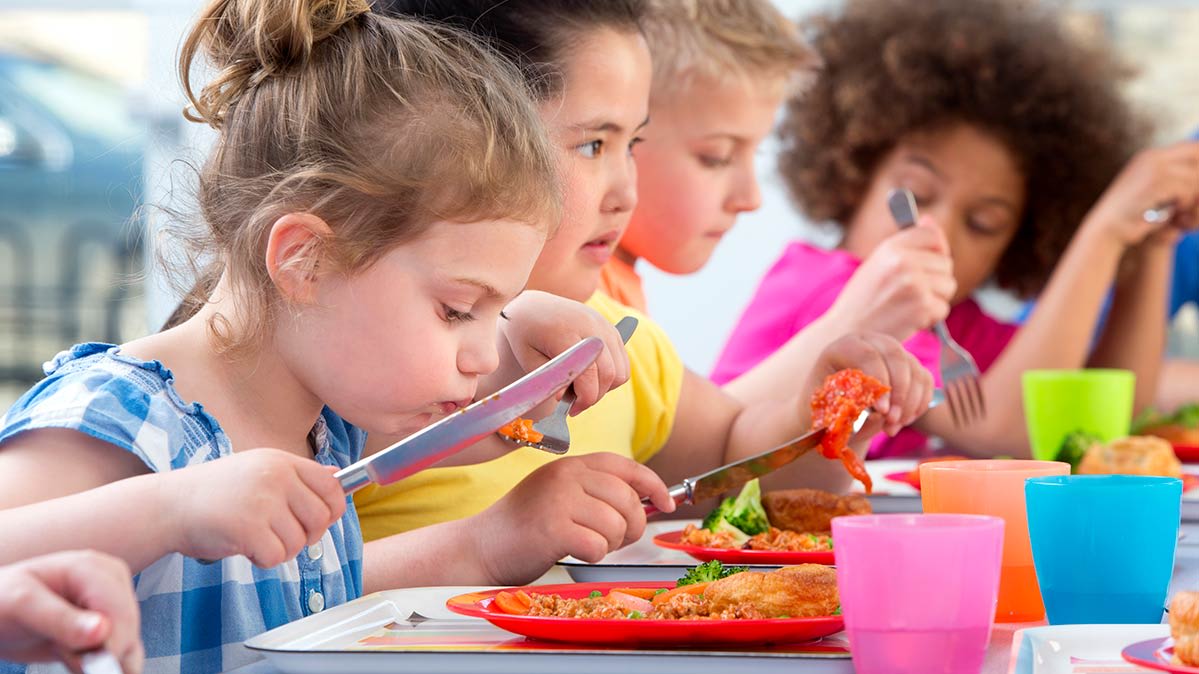Developmental models of eating behaviours
Image source https://article.images.consumerreports.org/prod/content/dam/CRO%20Images%202018/Health/August/CR-Health-Inlinehero-healthy-choices-school-cafeteria-0818
Health psychology has many theories of eating behaviours that aim to understand just how much social and environmental experiences have an impact on how we eat today.
Let me briefly explain...
Exposure
Neophobia s a general unwillingness to eat new or novel foods and is especially prevalent in infants. It is thought to be an adaptive process supporting survival. The exposure hypothesis states that the more we are exposed to a new food, the more familiar it becomes and the more we like it. For example, Birch and Marlin (1982) gave young children novel foods over a 6 week period and found that it took 8-10 exposures before the decided that they liked it.
Associative learning
Food as rewards:
Classical conditioning may be responsible for certain foods becoming associated with certain occasions. For example, from a young age we learn to associate cake with celebrations. Likewise, telling children that they can have a treat after eating their vegetables makes them associate vegetables as a negative thing that they have to do to get something good. Thus, reducing their preference for the veg and increases preference for the reward food.
Some research has found that parents who have tight control over their
children’s diets are more likely to make the kids develop a preference for
restricted foods. This works the same when you are dieting and restrict foods,
it just makes you want the forbidden fruit even more! However, other research
focusing on type of control has found that convert control that is not detected
by the child (like not bringing certain foods into the house) results in the
children choosing less unhealthy snack foods.
Classical conditioning may be responsible for certain foods becoming associated with certain occasions. For example, from a young age we learn to associate cake with celebrations. Likewise, telling children that they can have a treat after eating their vegetables makes them associate vegetables as a negative thing that they have to do to get something good. Thus, reducing their preference for the veg and increases preference for the reward food.
Parental
control:
Physical
consequences:
Have
you ever had food poisoning and after found yourself with an aversion to
whatever it was that made you sick? This is a natural food consequence that
your body has developed to protect itself. Interestingly, research has explored
paring food cues with satiety and found that infants actually adjust their
consumption of milk depending on the calorific density of the milk provided
(Formon, 1974). Need more evidence that your body knows what it is doing when
it comes to food consumption? Birch and Deysher (1986) found that pairing a
specific flavour of milk with a specific calorie density made the infants
adjust their consumption according to drink flavour.
The
wisdom of the body:
Finding
freedom from dieting and restrictive eating is becoming more popular. But so
many are struggling to adopt the intuitive eating approach and give their body
back control. So, I thought I would share some evidence as to why your body
might know more than you give it credit for. Davis (1939) extensively studied
the developmental aspects of eating behaviour. In one of her studies, she gave
children free rain of what they wanted to eat over several months, and provided
them with a variety of foods to chose from. Her findings showed that children
are able to select and eat a diet consistent with growth and health. This
generated the theory of ‘the wisdom of the body’ and emphasizes the body’s
innate regulatory mechanisms to meet nutritional requirements.
We learn about eating behaviour from watching others. As children we eat food prepared by our parents, and learn to eat the foods that they eat.
However, our peers might play a more important role in our eating behaviours. Birch (1980) sat children next to other children who had different tastes in vegetables. After only a few days the children were starting to switch their veg eating to match those around them.
Media:
Education:
For health information to be effective it needs to be seen as reliable and reputable. Information coming from sources perceived as unreliable or information that is confused or contradictory is likely to be ignored. All too often health messages on food are mixed, such as the benefits of drinking red wine, the danger of eggs and the risks and benefits of meat consumption are all likely to leave the public confused and less trusting in nutritional advice.

Comments
Post a Comment